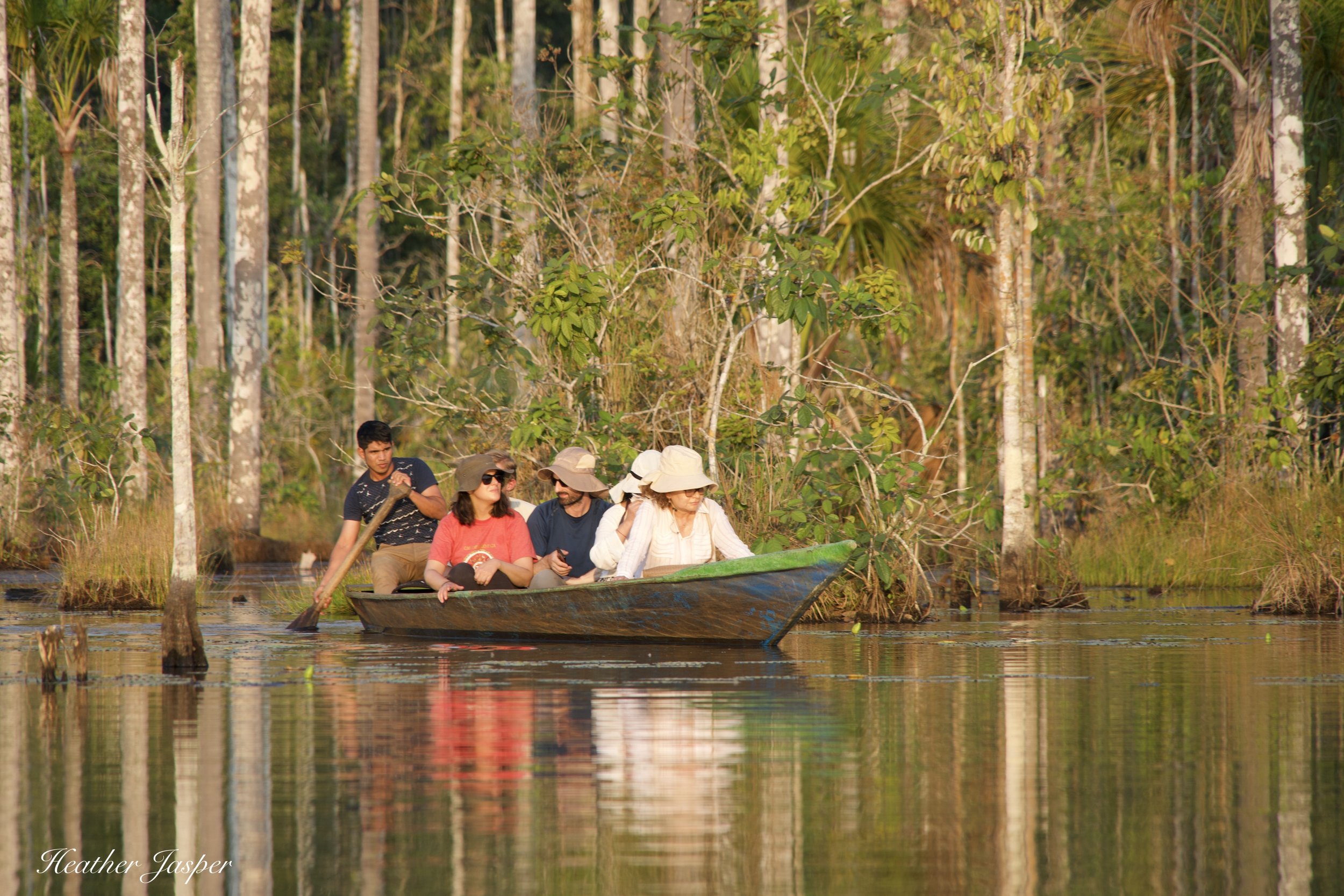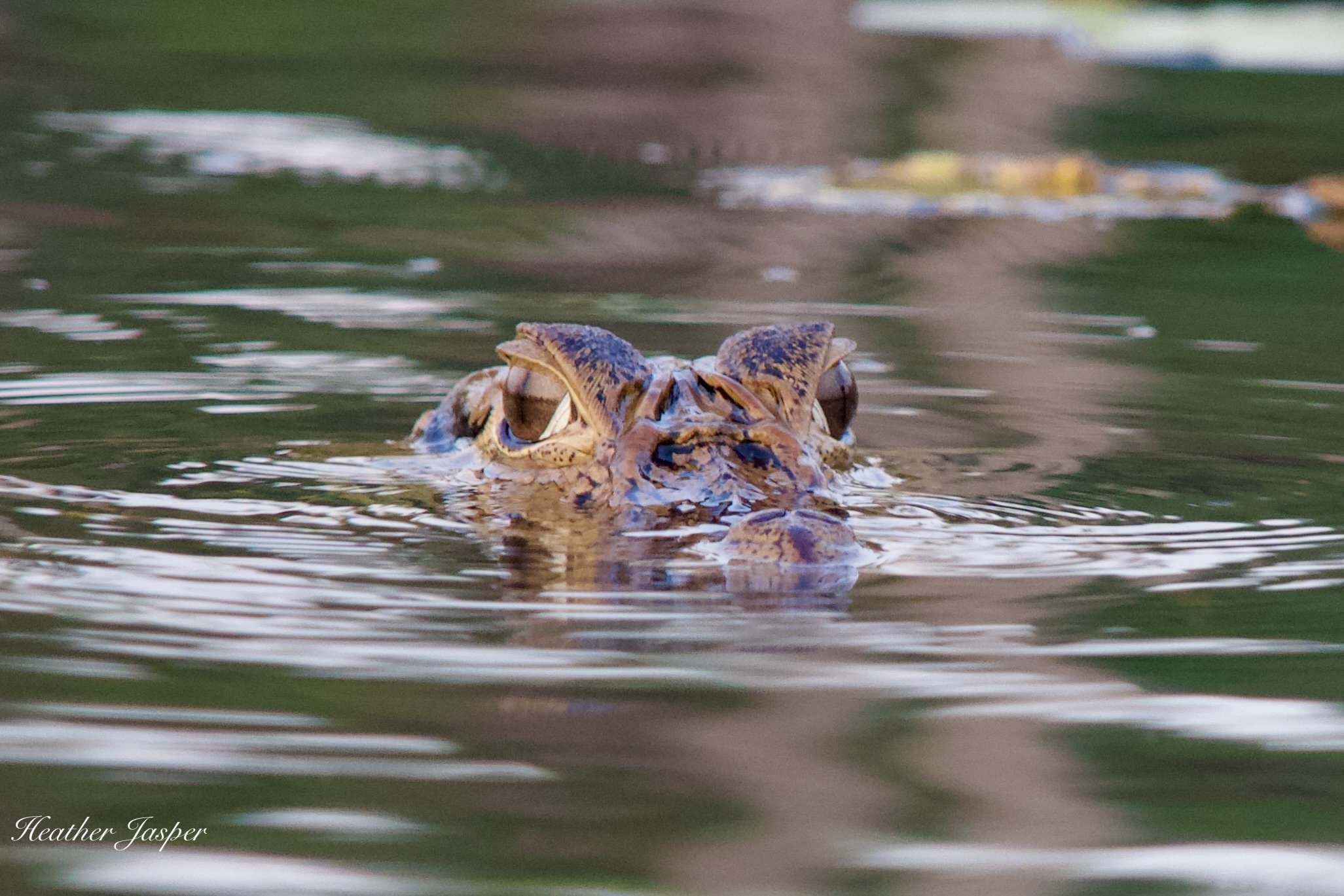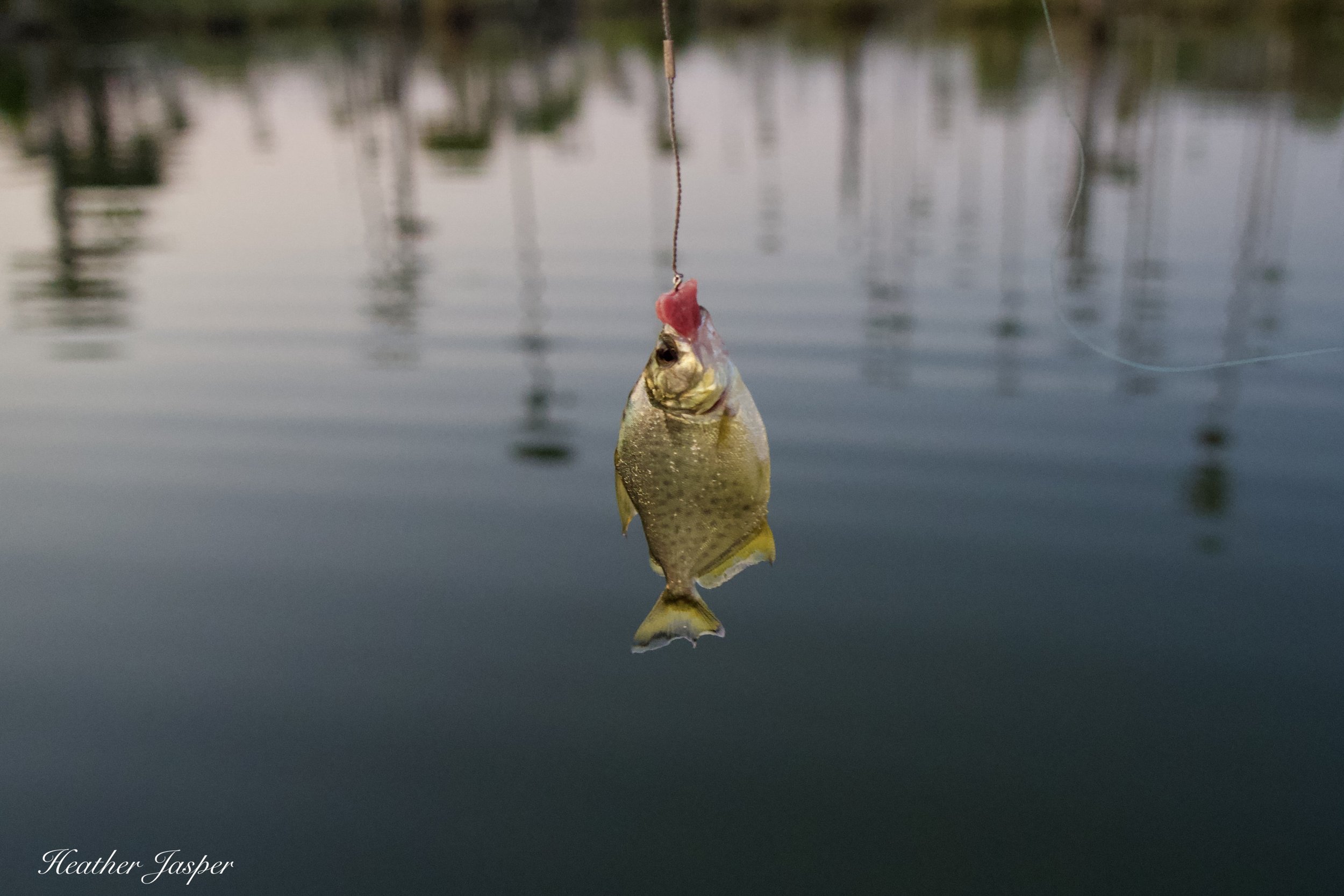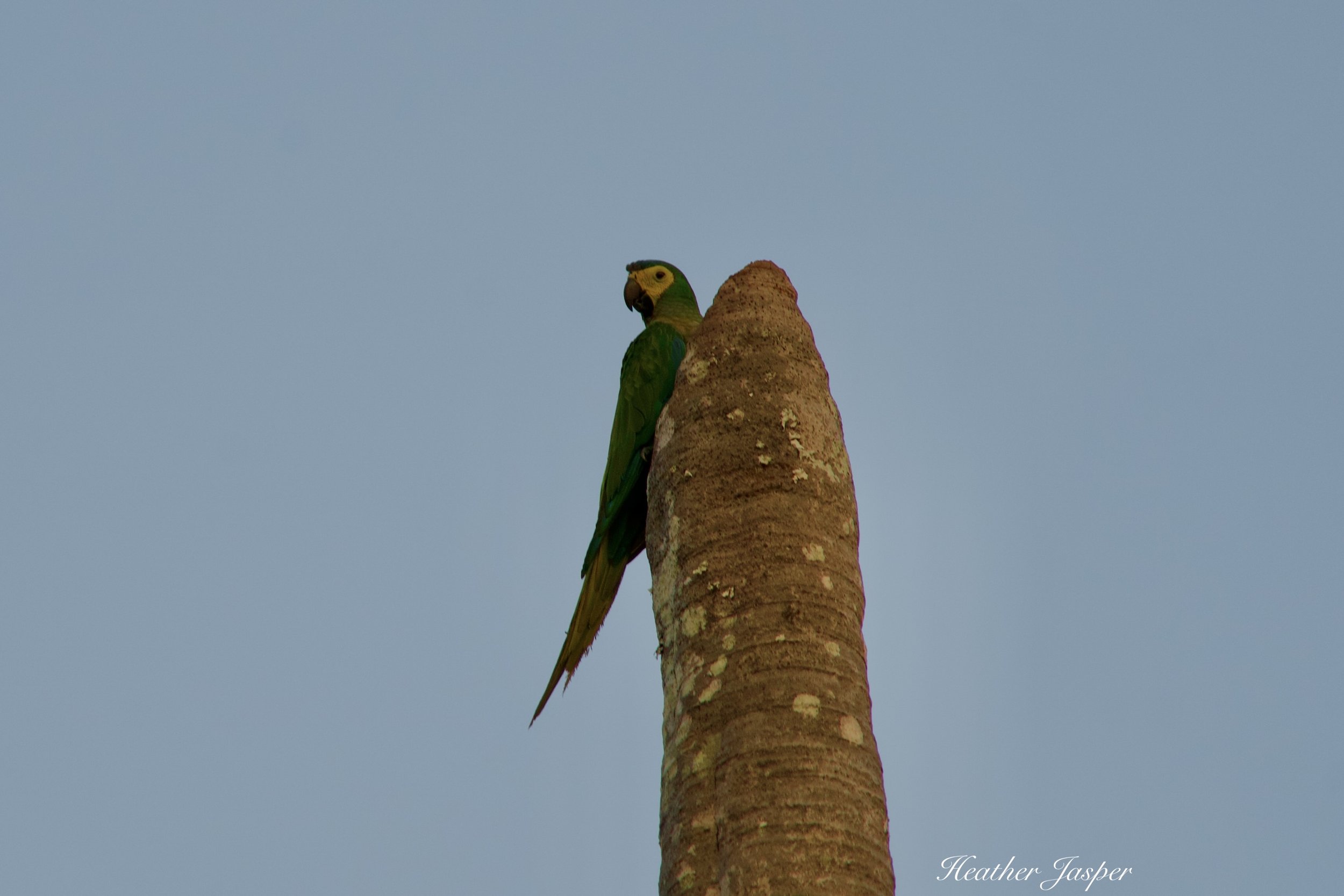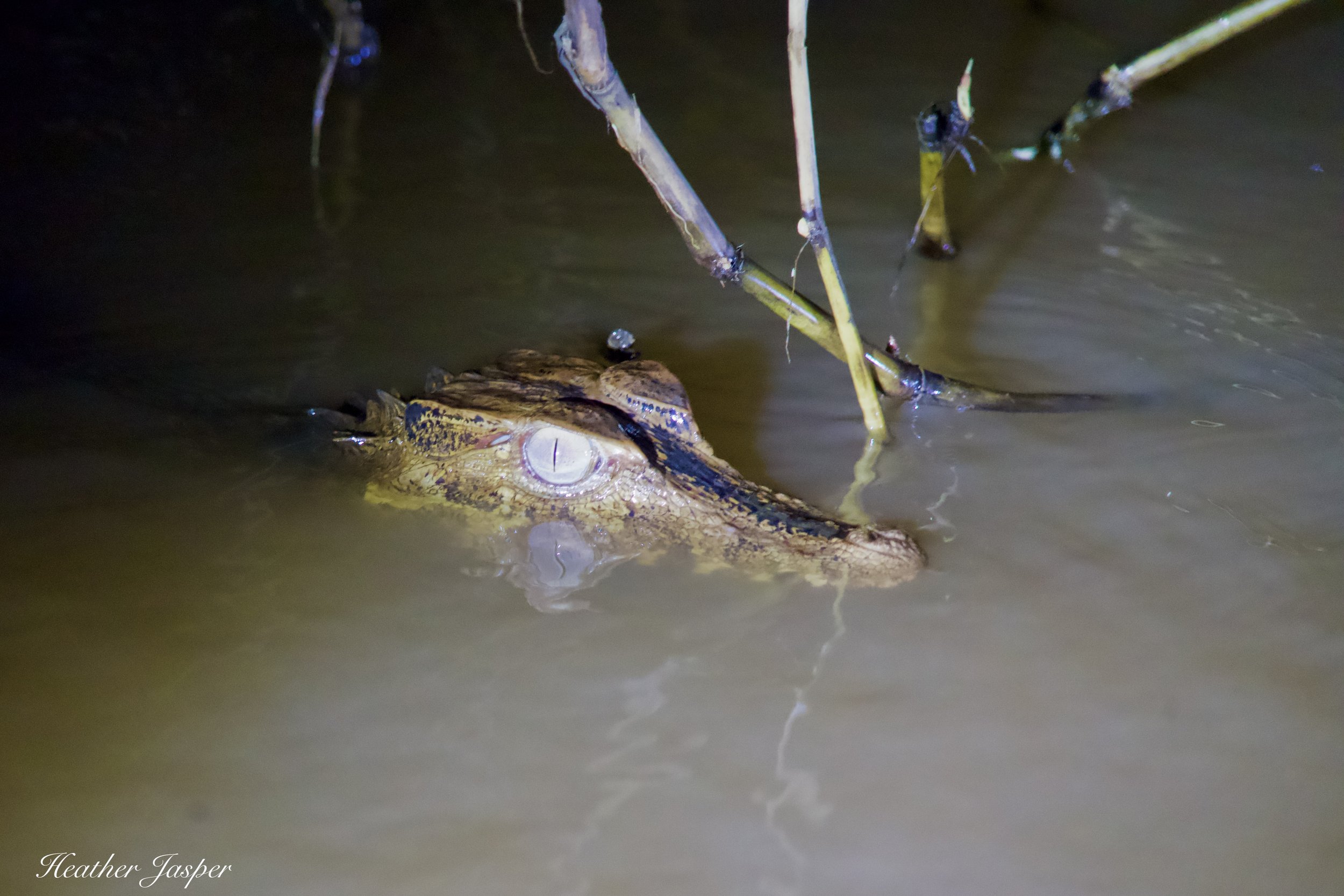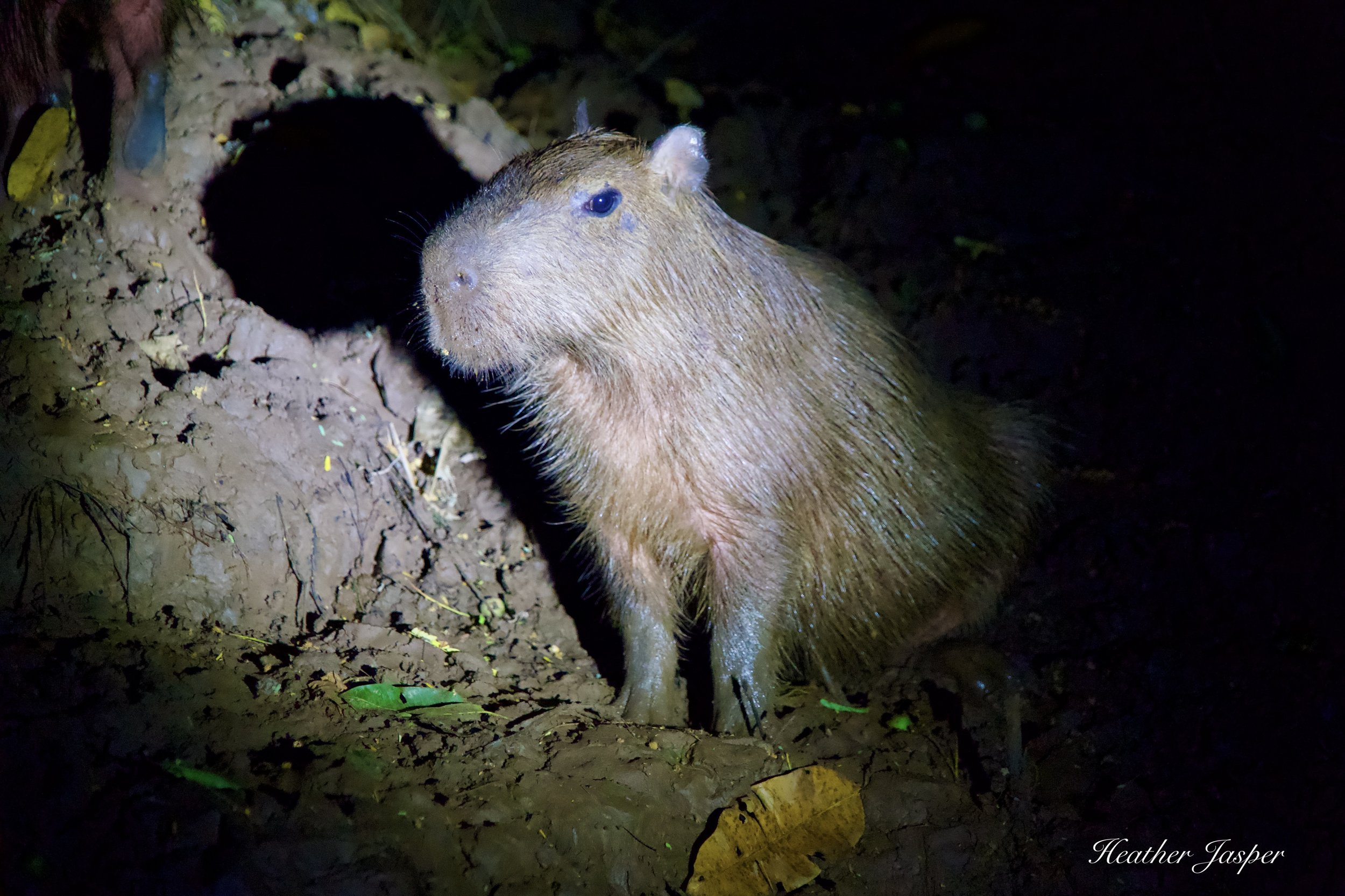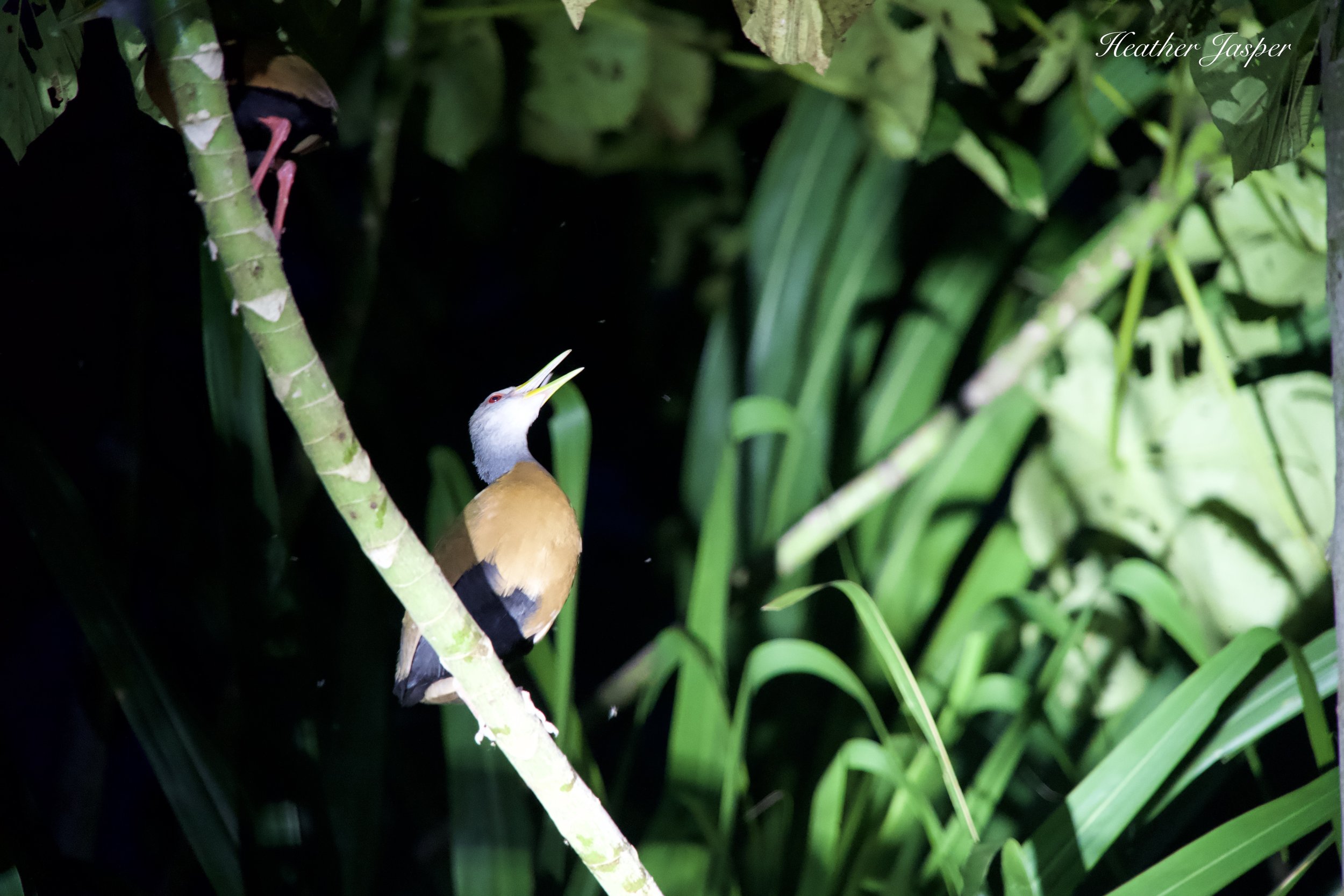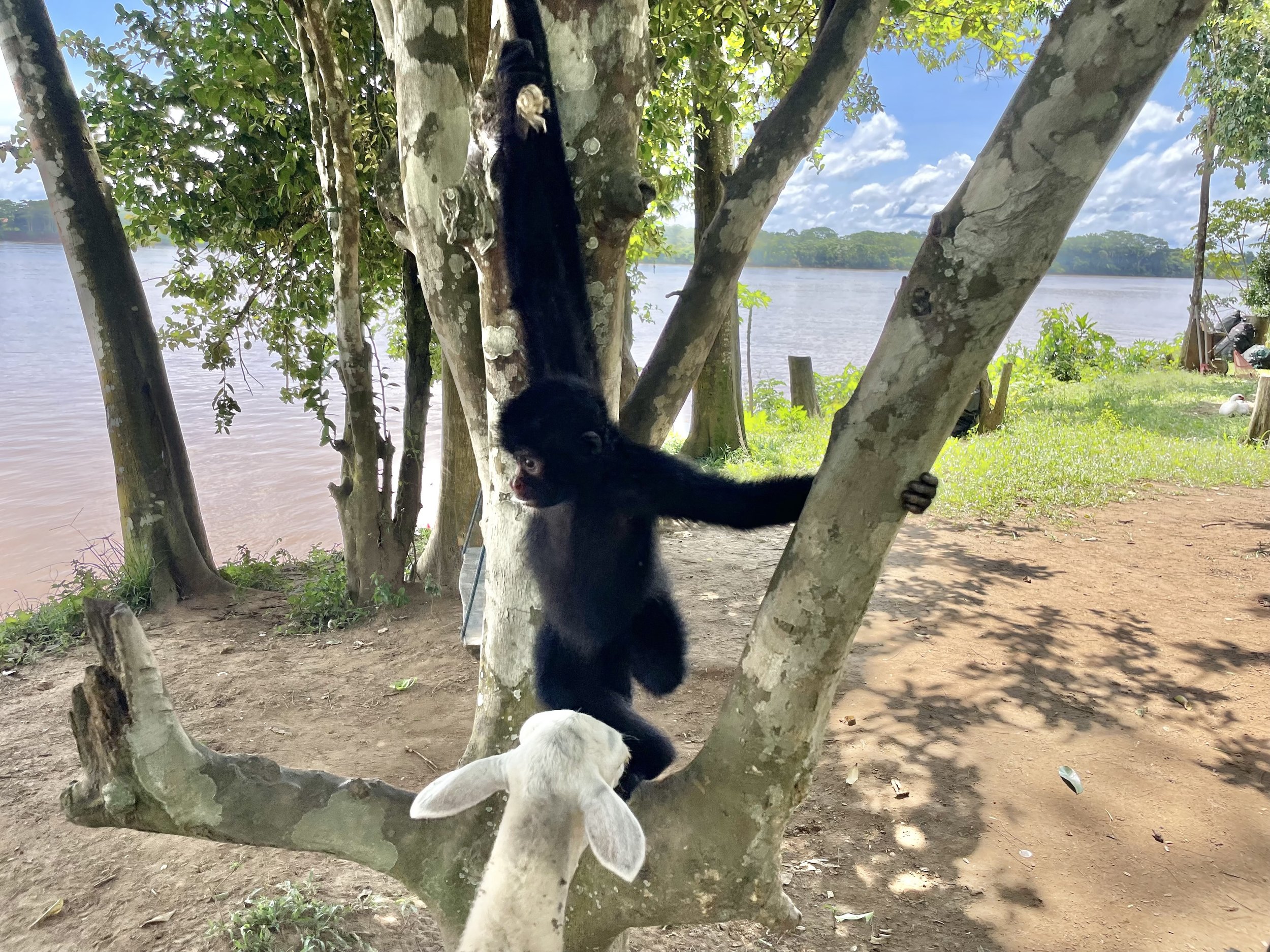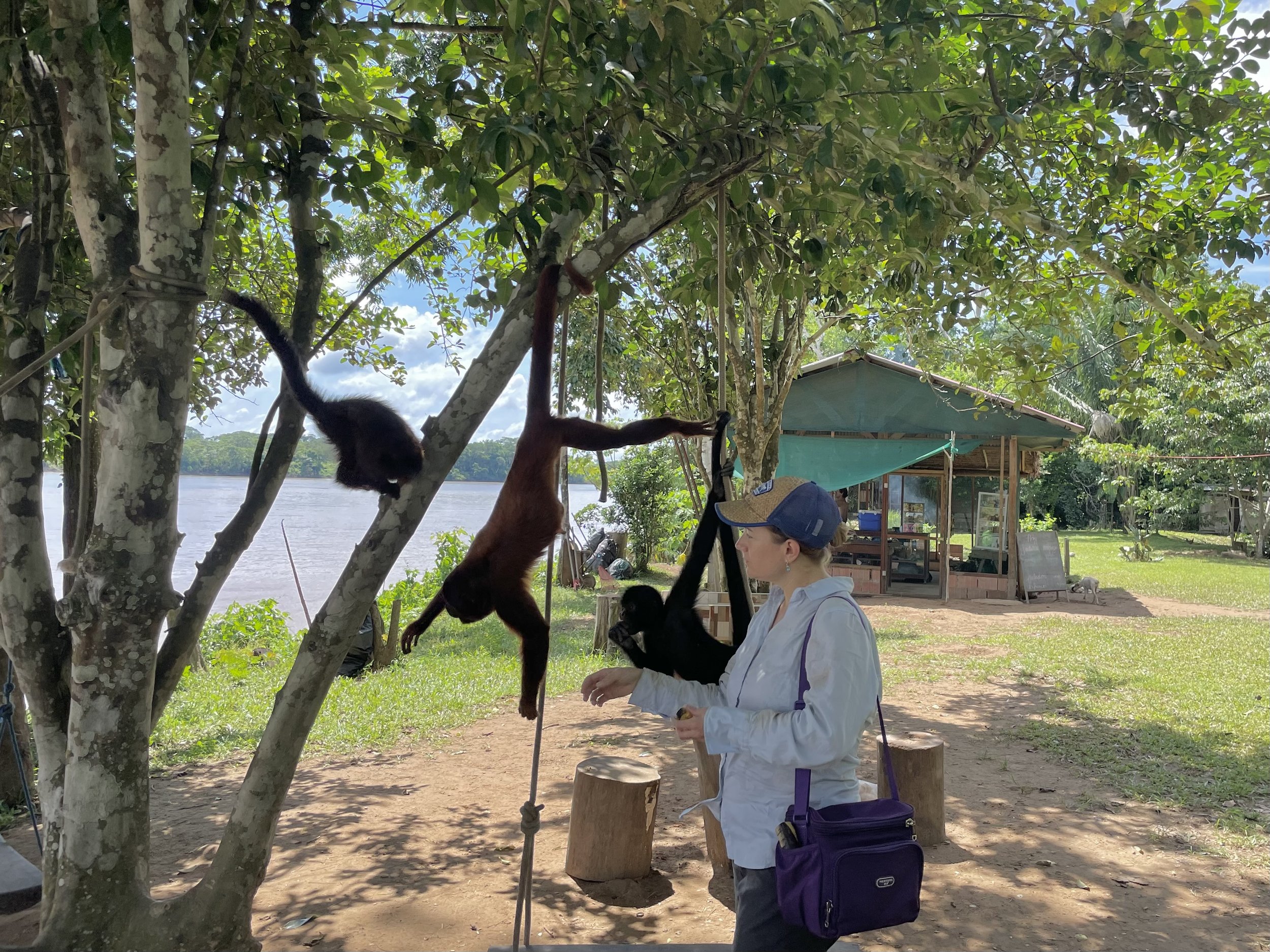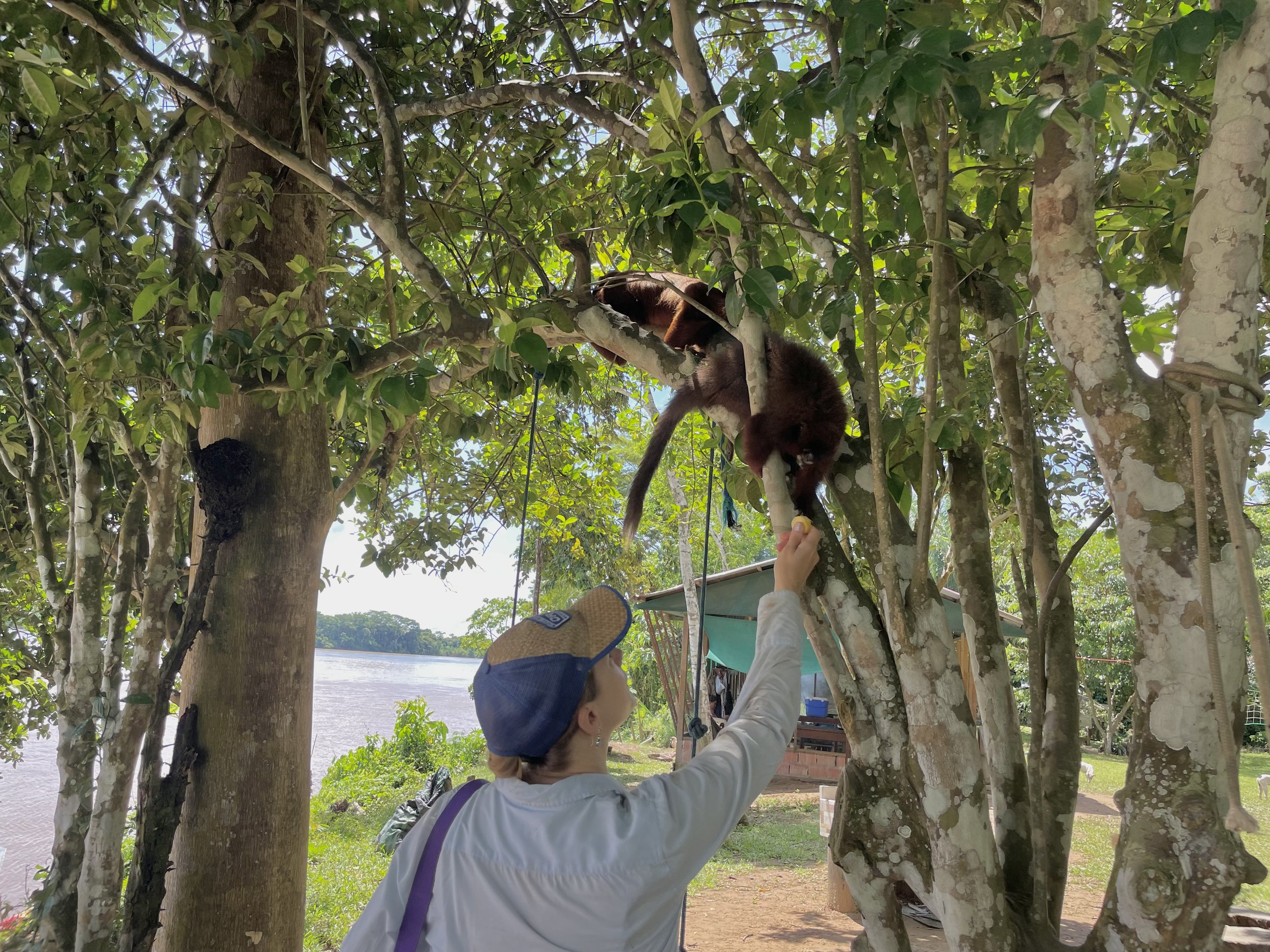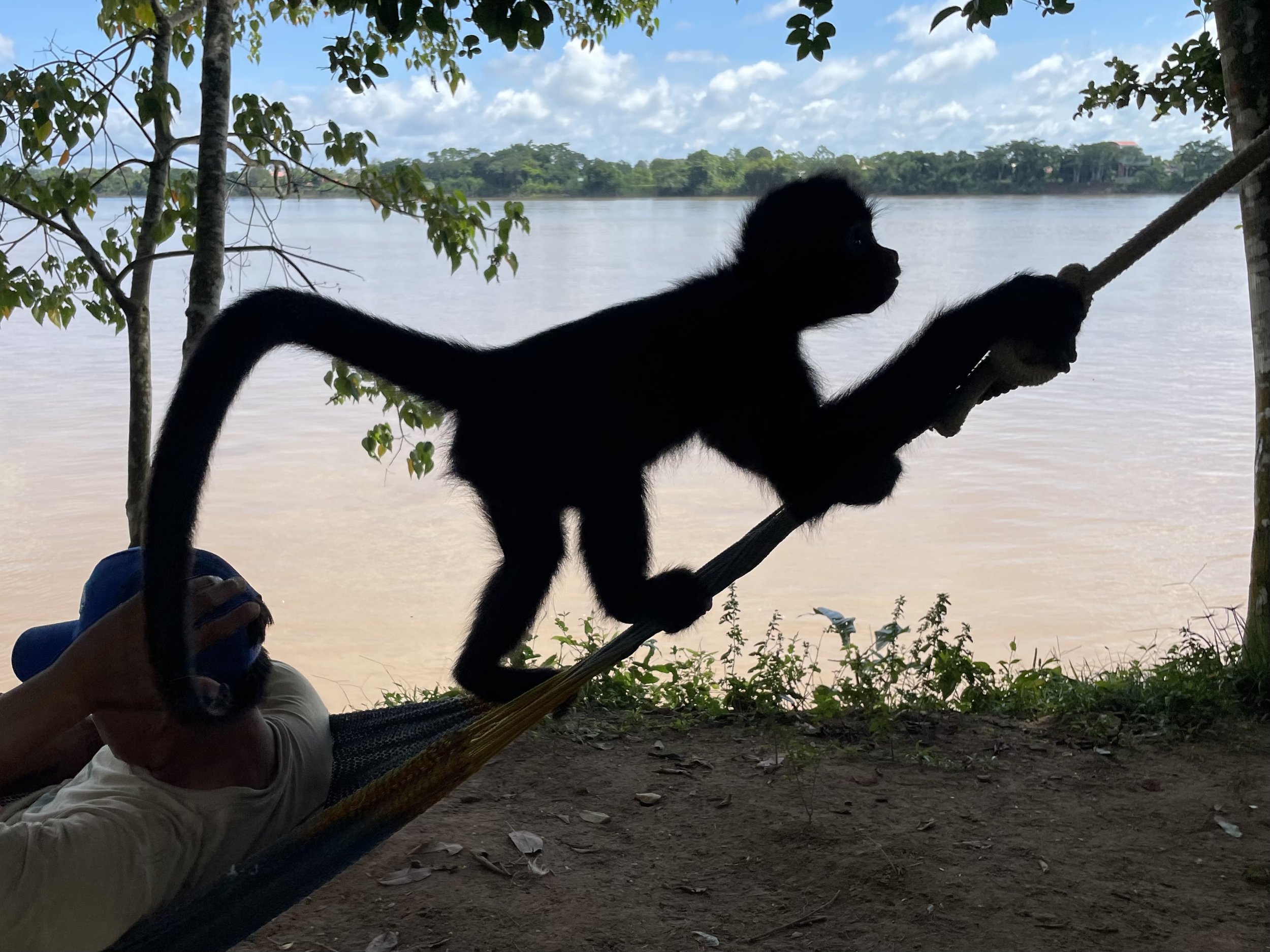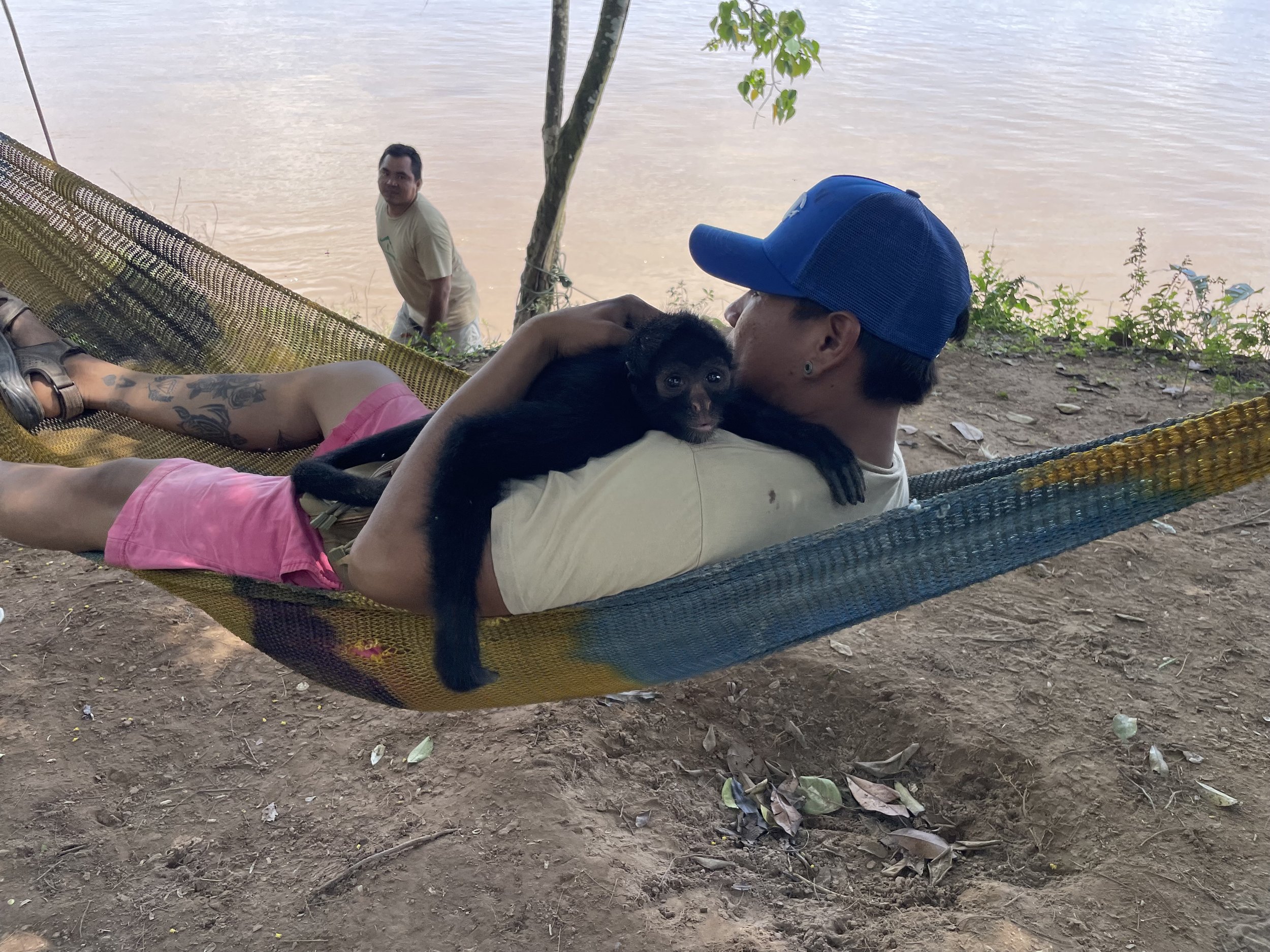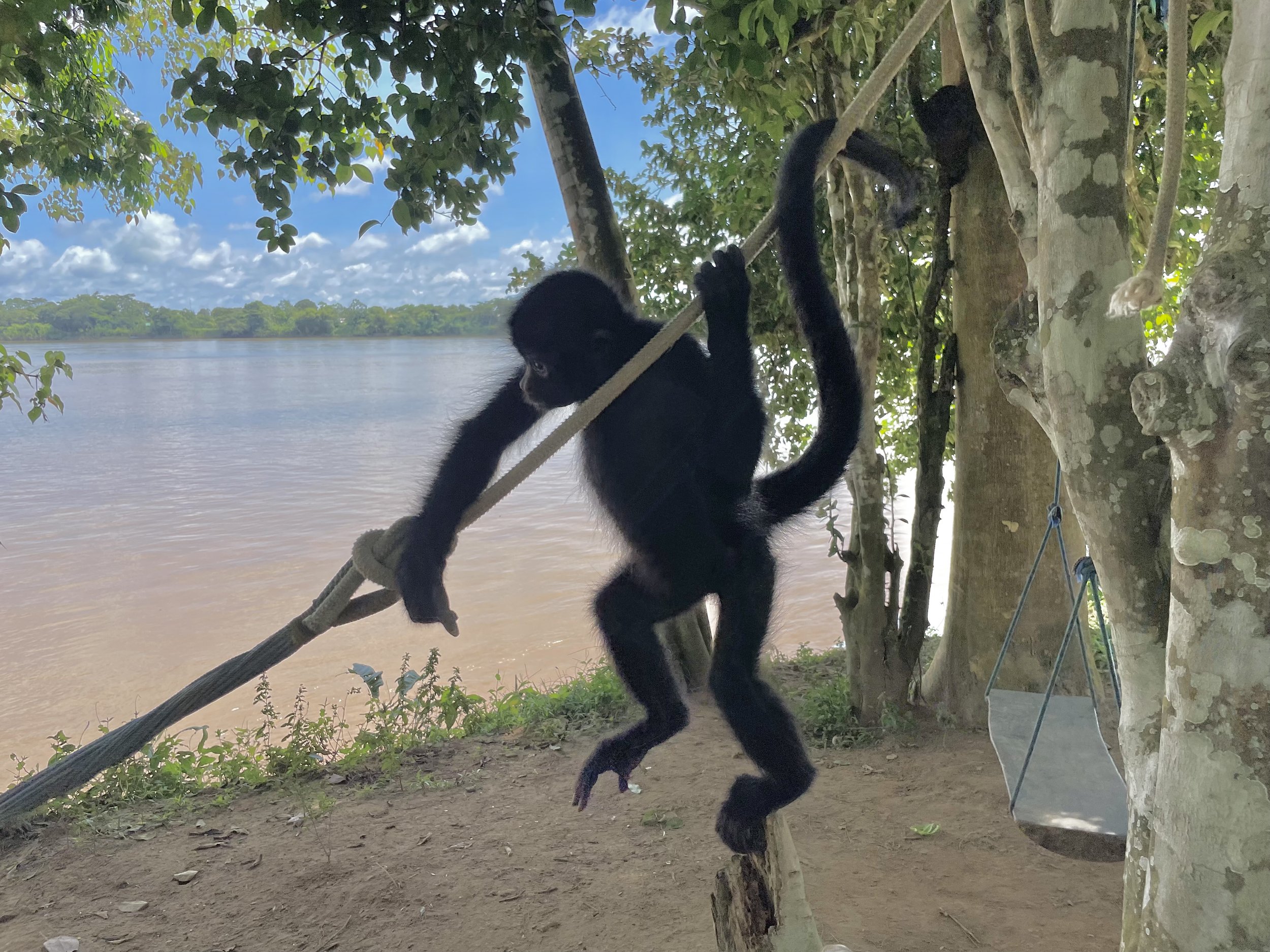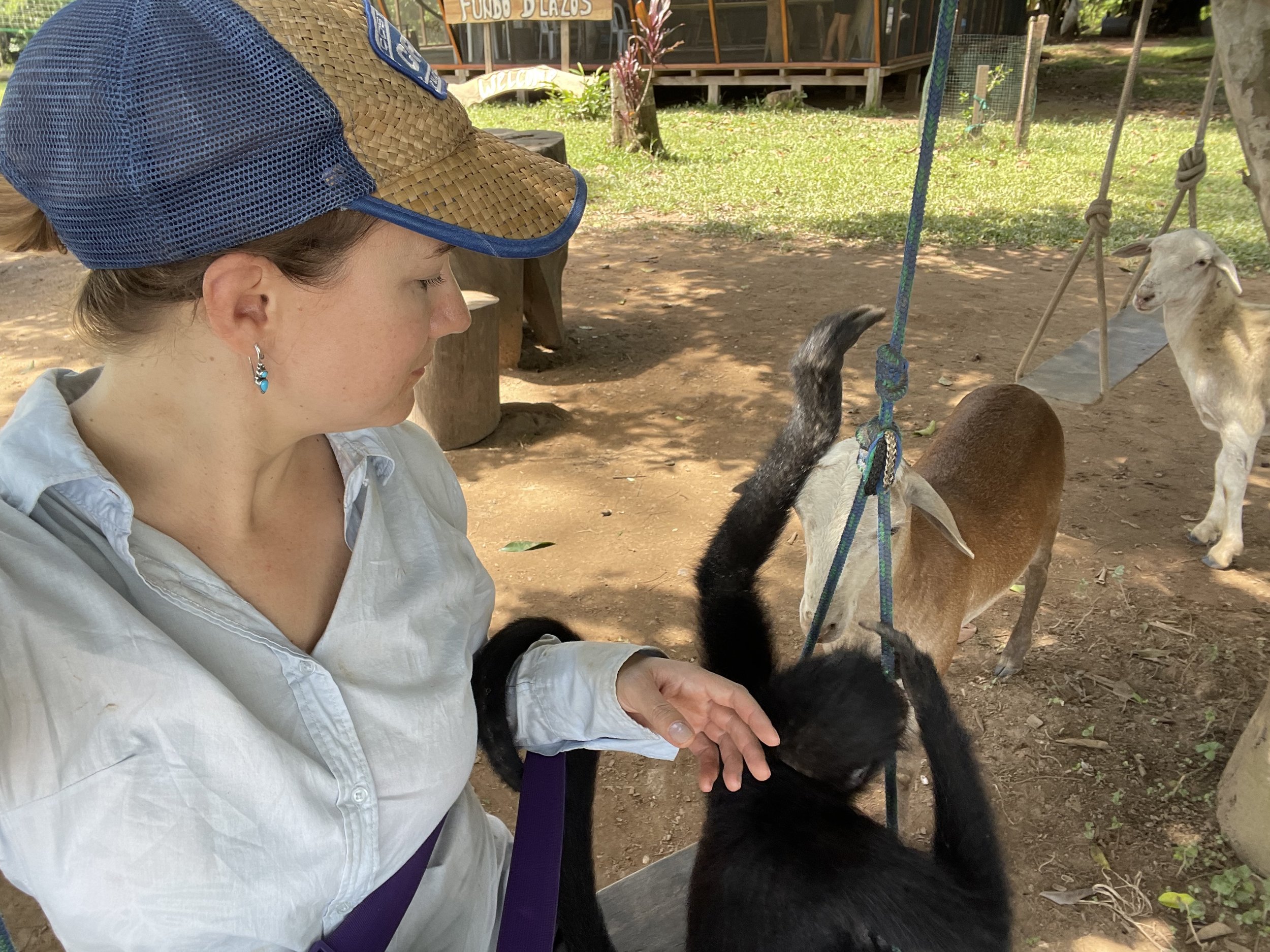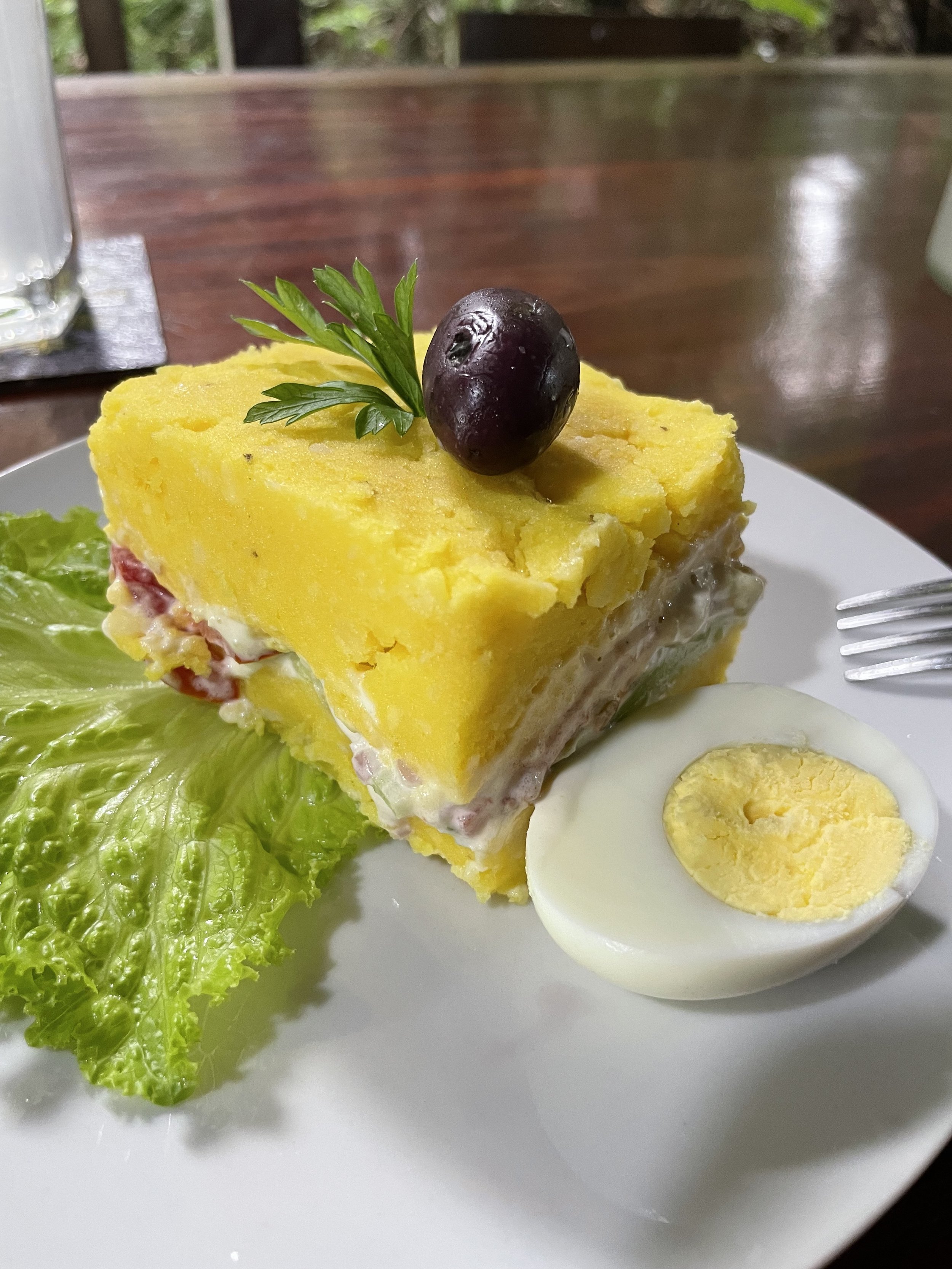Green House Tambopata
Green House Tambopata is right on the Tambopata River. It’s a small lodge, so you’re guaranteed personalized service.
A Jungle Lodge in a Garden
Arriving at Green House Tambopata is more like entering a garden than a hotel. The buildings are surrounded by lush forest on both sides, with the Tambopata River bordering the far side of the property.
Green House Tambopata has jungle on three sides, with the Tambopata River on the fourth side.
Rooms are open and airy with ceiling fans that make hot nights in the jungle much more comfortable.
Green House Tambopata is owned by Charlie Peña, who works closely with the local community to defend this part of the forest. He and his neighbors have set up a checkpoint to ensure that nobody can take logs from the area. Illegal logging is a big problem in this region of Peru and I’m happy to see locals combating this form of deforestation.
Activities at Green House Tambopata
The first time I visited Green House Tambopata, in 2022, I went on a tour of Lake Yacumama in the evening. The tour included piranha fishing, but I was more entranced by the Red-bellied Macaws that nest in the tops of dead trees. The lake is beautiful, especially at sunset. This was my favorite place for a sunset near Puerto Maldonado. Besides all the fantastic wildlife, it supports the local community. Companies like Green House Tambopata pay the community for each tourist that they bring to the lake. Also, the boats are rented from the community and each boat is paddled by a community member. This is a great way to support Indigenous people who are committed to sustainable tourism.
The Forest Trails Across the River
During my second visit to Green House Tambopata, in April 2024, I got to visit the rainforest across the river from the lodge. Just one person lives there, protecting the area from illegal logging and hunting. He greeted us warmly and we set off through the forest. My guide showed me which plants his family uses for traditional medicine and taught me how many Indigenous people still live in the rainforest as they always have. The biggest difference now is how now they have to protect it from the new threats of deforestation.
Protecting the Rainforest
The best way to protect the Amazon rainforest is to support the Indigenous people who live there and defend the forest from illegal logging, dredge mining for gold and other forms of deforestation.
I was there in the afternoon, which is the worst time to look for wildlife. Morning and evening are the best times, but this walk was to learn about the flora, not the fauna. If you book a stay at Green House Tambopata, plan on an afternoon walk to learn about the plants in the rainforest.
Evening River Cruise
Before sunset, we went upriver on the boat, watched the sunset, then went back downstream slowly. My guide and the boat captain shone their flashlights across the water, illuminating fishing bats and nocturnal birds. I never saw a bat catch a fish, but I hope to one day. The loudest birds we found were a pair of Gray-necked Woodrails, whose asynchronous squawks echoed loudly across the river. We also saw several capybaras and caimans along the banks.
My Visit to the Monkey House
La Casa de los Monos is a short boat ride from Green House Tambopata. The family who lives there has turned their home into a cage, to keep the monkeys out. The owner joked to me that it’s the only place in Peru where people live in cages and animals run the show. Most homes in the region are open, without glass or anything in the windows to keep animals out. The monkeys and goats are the friendliest, though there are plenty of other animals who crowd around visitors, waiting for bits of banana or other snacks.
According to the owner, the animals were there long before he arrived. The location is across the river from a part of Puerto Maldonado, and it has long been a dumping ground for unwanted pets. Though it’s illegal, owning a pet monkey is unfortunately common. Of course, most people quickly realize how impossible it is to have a monkey in an apartment or house. That’s when they look for somewhere to leave it. They’re too accustomed to people to live wild in the forest, but no longer wanted as pets.
This is not yet an accredited rescue shelter. The owner told me that they have recently started the paperwork to become a legitimate non-profit animal shelter. Next time I’m in Puerto Maldonado I’ll check back with them on that status and update this blog.
Food at Green House Tambopata
Before arrival, Charlie checked to see if I have any dietary restrictions and assured me that his cook was great with vegetarian food. While the dishes were simple, they were tasty. I particularly liked the causa, a Peruvian layered potato dish served cold. The Mediterranean garbanzo salad was also delicious. In the morning I had fruit and homemade granola.
Green House Tambopata is the only jungle lodge I know of that has its own climbing wall.
Activities at Green House Tambopata
Kayaking and hiking were my favorite activities, though all of the offerings are great options.
How to Get There?
Green House Tambopata is one of the few lodges that is accessible by both boat and road. The owner, Charlie, picked me up at the airport and drove me to the lodge. It’s about a 20 minute drive from the airport and another 5 to 10 minutes to get into the center of Puerto Maldonado.
How to Book Green House Tambopata?
Call or text Charlie with WhatsApp at +51 972 704 291, email informes@greenhousetambopata.com or book on their website http://greenhousetambopata.com.



